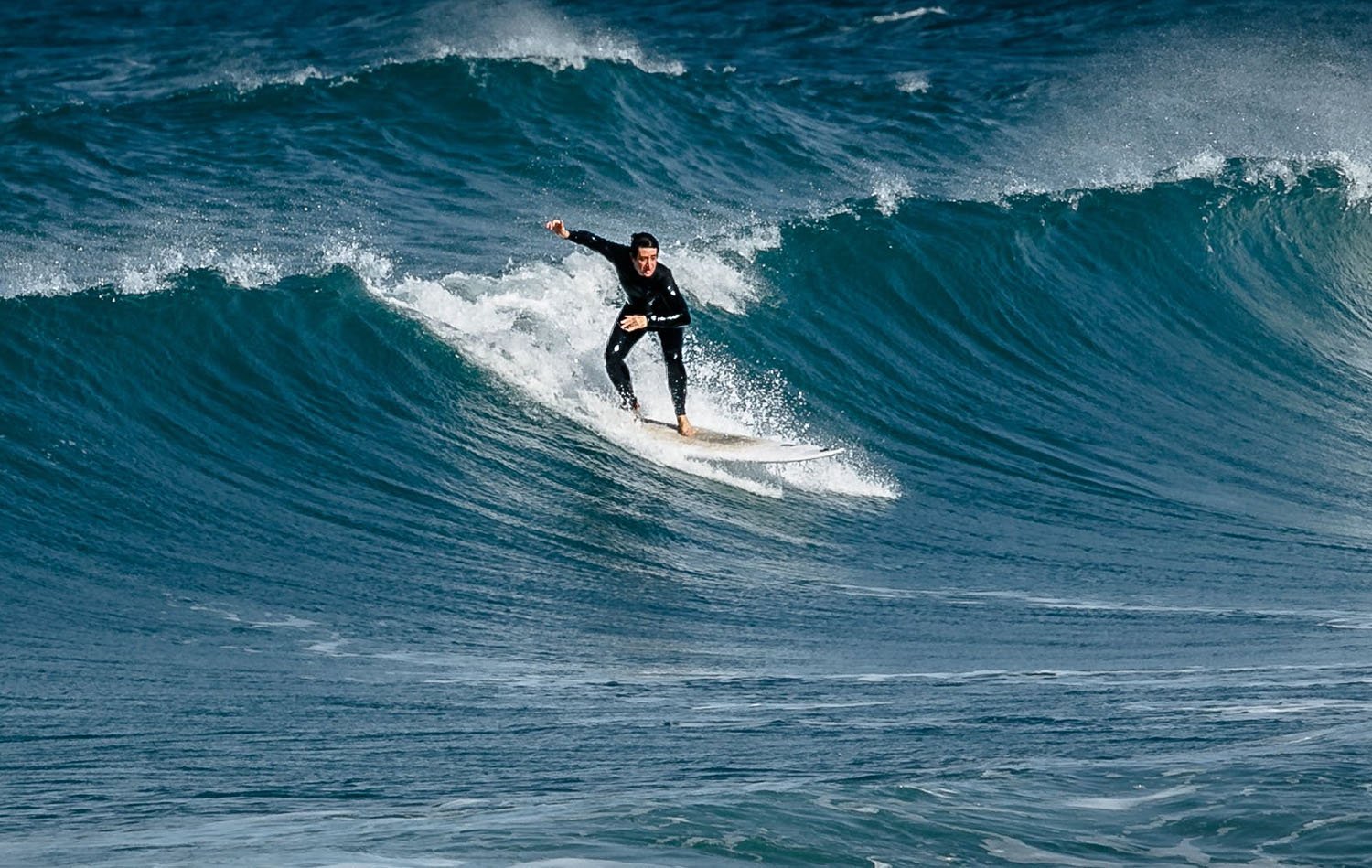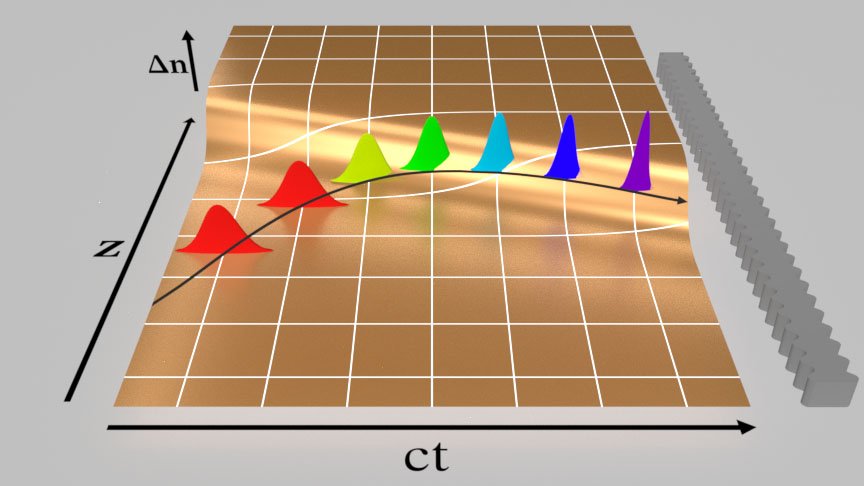A similar situation occurs when a light pulse interacts in a material with a moving front of refractive index as shown in Fig. 2. In this case, no friction needs to be overcome and the extracted energy from the front is used instead to change the color (frequency) of the light.
Experienced surfers can balance their velocity direction such that they move laterally to the wave but do not leave the wave slope. The same effect can be achieved for light as well. In this case, the light pulse is trapped in the front and can continuously change its color as long as the pulse stays on the front’s slope.

[ad_336]
This effect can lead to further interesting consequences. If one considers a signal composed of several light pulses which start at different positions, these pulses will all be collected by the front leading to signal compression. Alternatively, a light pulse can also enter the front, surf on its slope, gaining a frequency shift and then accelerate and leave the front in the forward direction, just like a surfer would do in order to end the surfing motion. Also, transmission through the front can occur if the light pulse cannot accelerate enough and front takes it over, very much like the situation when the surfer finally finds himself behind the wave.
These and other novel effects are discussed in the recent invited review article for Nature Photonics journal written by scientists from Hamburg University of Technology (TUHH), Menoufia University, Yokohama University, Helmholtz-Zentrum Geesthacht and ITMO-University St. Petersburg. They present a unifying theory of the optical transitions induced by a moving front and discuss recent experimental results and possible applications.

[rand_post]
The discussed effects go well beyond the fundamental physics of dynamic light interactions. The front induced frequency shift is relevant for frequency conversion in optical communications technology, where a packet of information can be switched from one frequency channel to another. Such a frequency shift can also be applied to single photons and used in quantum communication systems. The mechanism of light trapping in the front allows significant pulse compression and tunable delay.
The work was published today in Nature Photonics, one of the international scientific journals with the highest prestige.